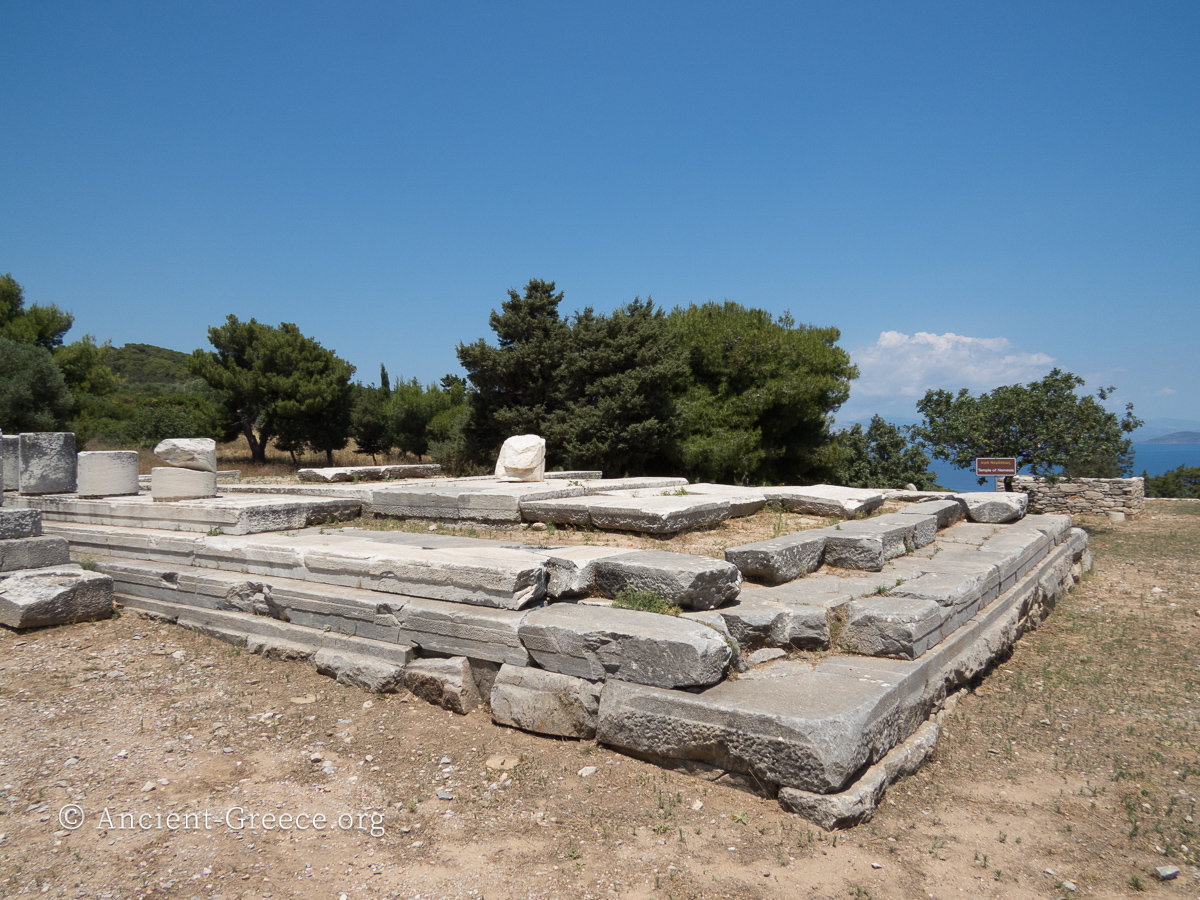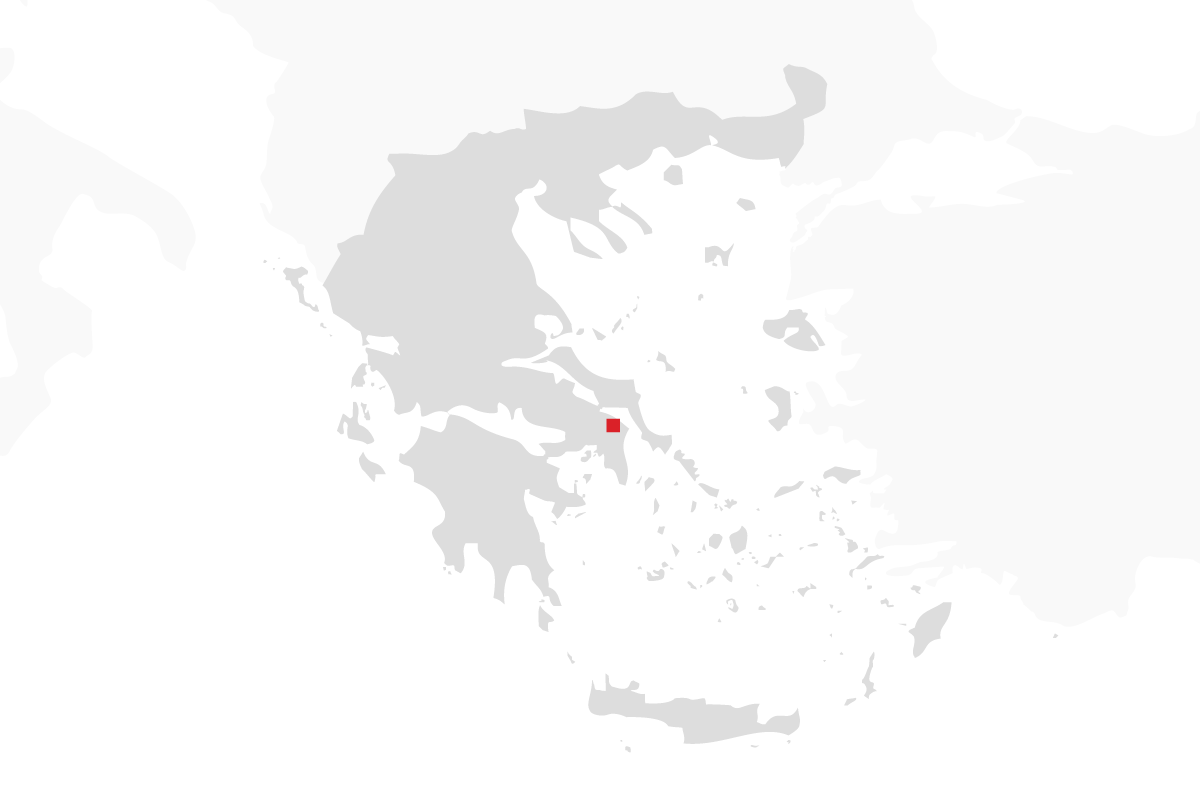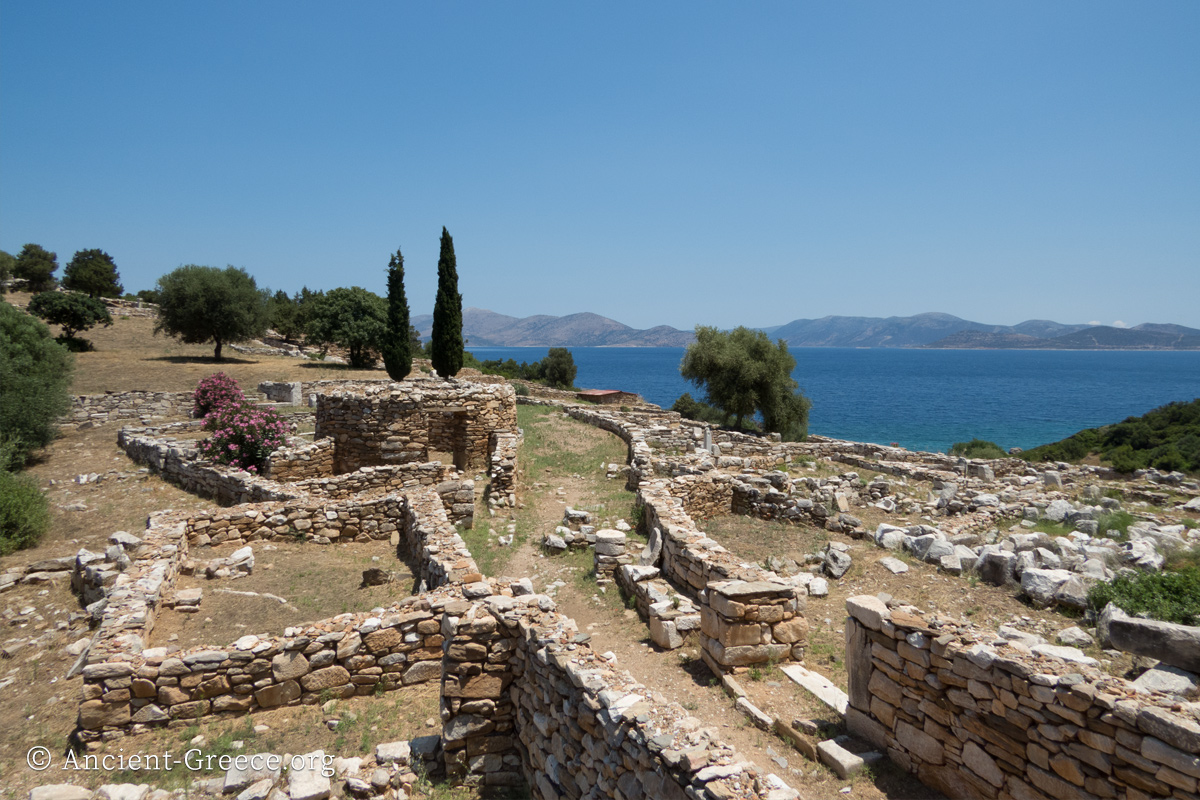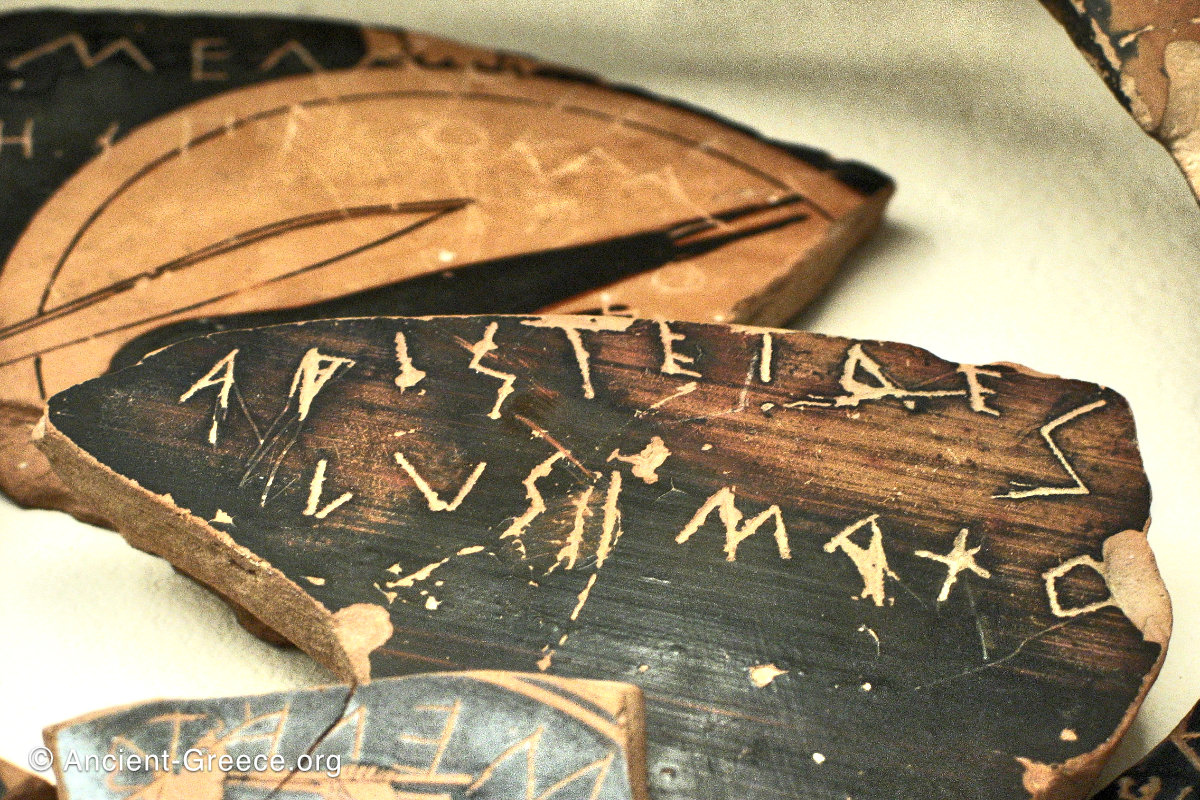
On this page:
The temple of Nemesis in Rhamnous was renown even before the fortified settlement acquired importance in the 5th c. BCE.
Nemesis was the goddess that prescribed happiness and misery to mortals, and a zealous punisher of “hubris” (ύβρις)–the disrespectful arrogance of humans who thought their destiny was under their own control.
The Temple Ruins

The mid-5th c. BCE temple of Nemesis (left) and the smaller early 5th c. BCE temple on the right (probably dedicated to Themis).
A colossal statue of Nemesis, carved in Parian marble by Agorakritos, resided in the temple, the head of which is now in the British Museum. The temple has the typical divisions of a cella, pronaos, and an opisthodromos in antis.
Visible in these photos are the column fragments with the incomplete Doric flutes (only “finished” at the bottom of the drum), which indicates the temple was probably left incomplete.


The early 5th c. BCE remains of the smaller temple next to the temple of Nemesis are visible on the two left-most photos. It is believed that it was dedicated to Themis or to Themis and Nemesis jointly, and it was built with polygonal marble construction.
It measures 10 x 6 meters and was abandoned in the 4th c. CE. It was built on the site where there was an earlier temple of Nemesis from early 6th c. BCE, known from a few Laconian roof tile remains, and another made of poros stone that was probably destroyed by the Persians in 480-479 BCE. Although very few fragments remain from the temple’s columns, it was a peripteral Doric temple (6 x 12 columns) made of local poros stone.
Worship


Archaeological finds in the area denote worship of Nemesis as early as the 6th c. BCE.
The worship of Nemesis ended in 382 CE when the Byzantine emperor Arcadius ordered that all pagan temples be destroyed.
Related Pages




